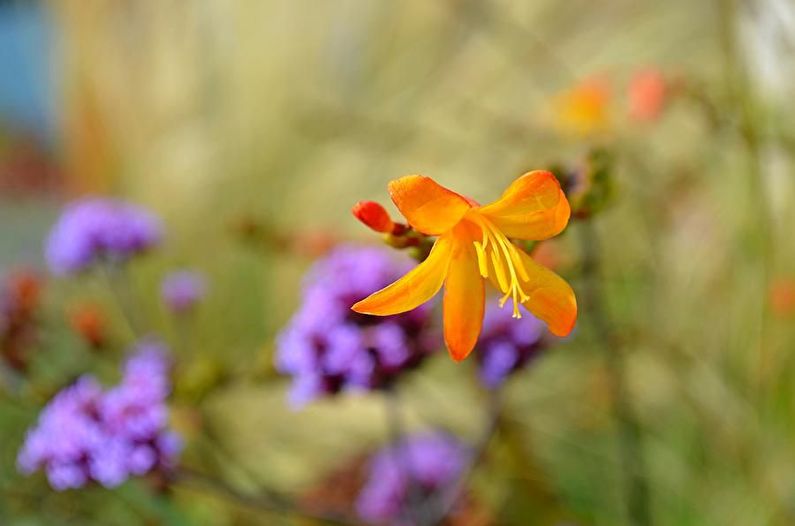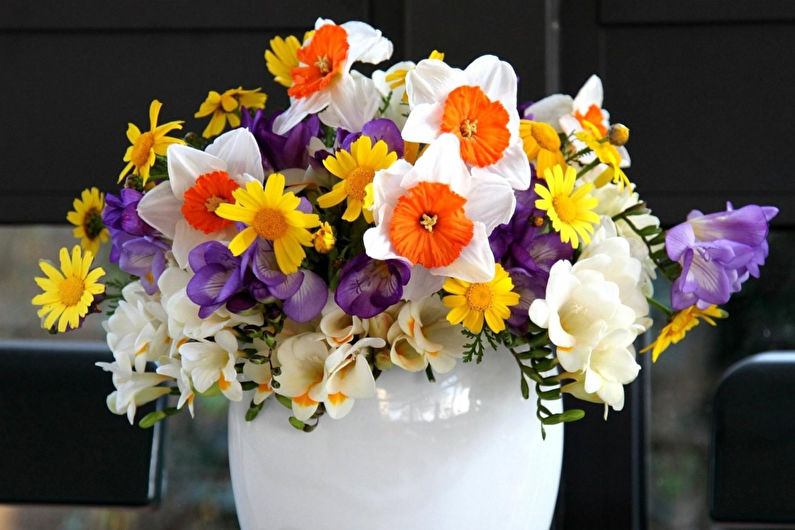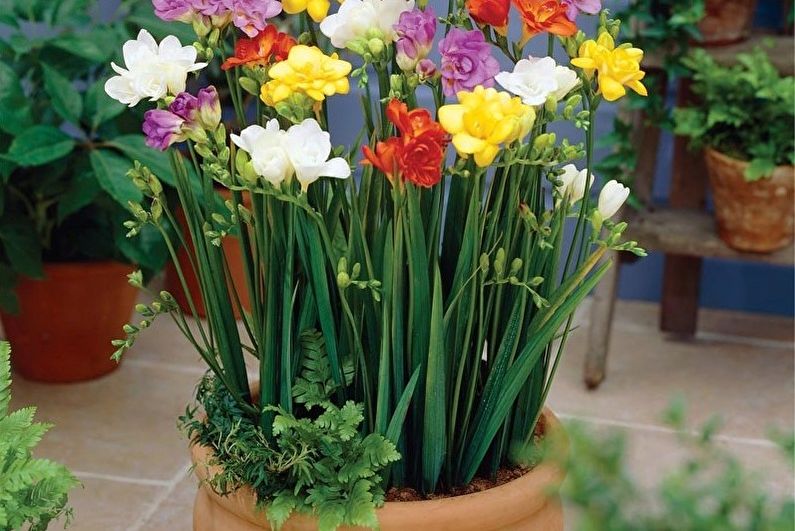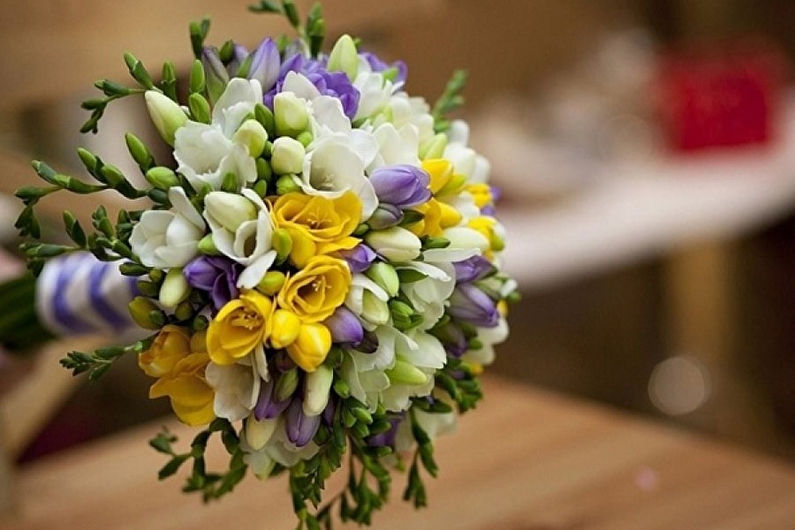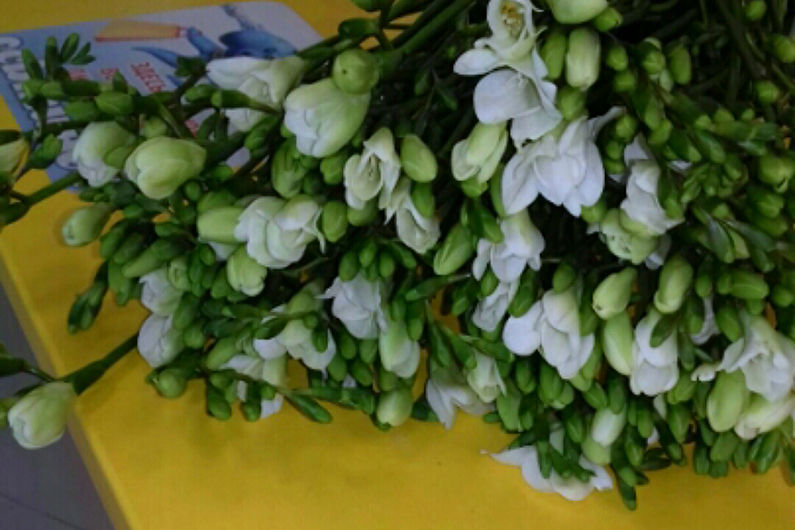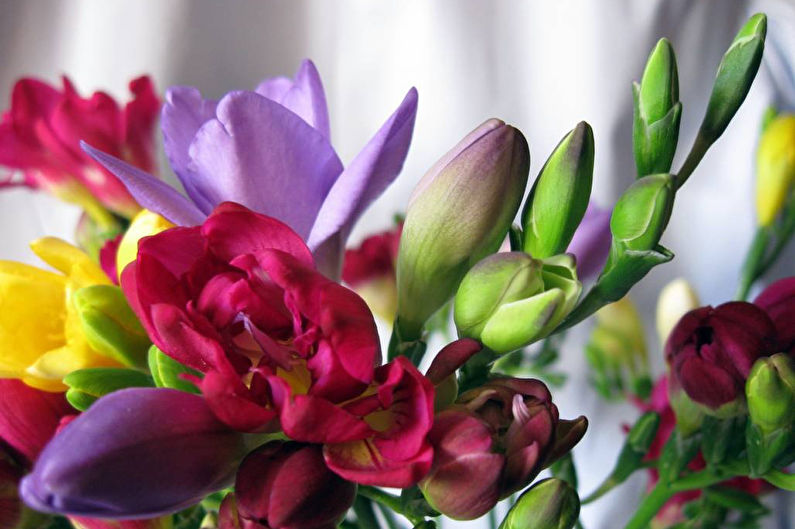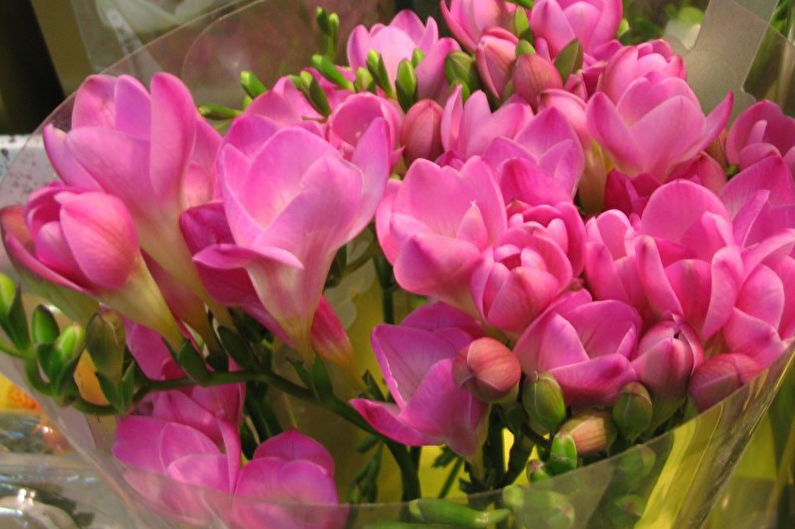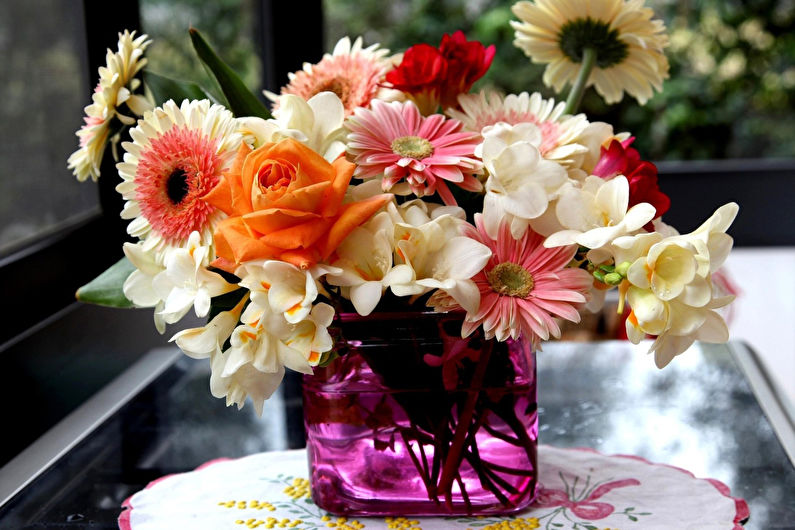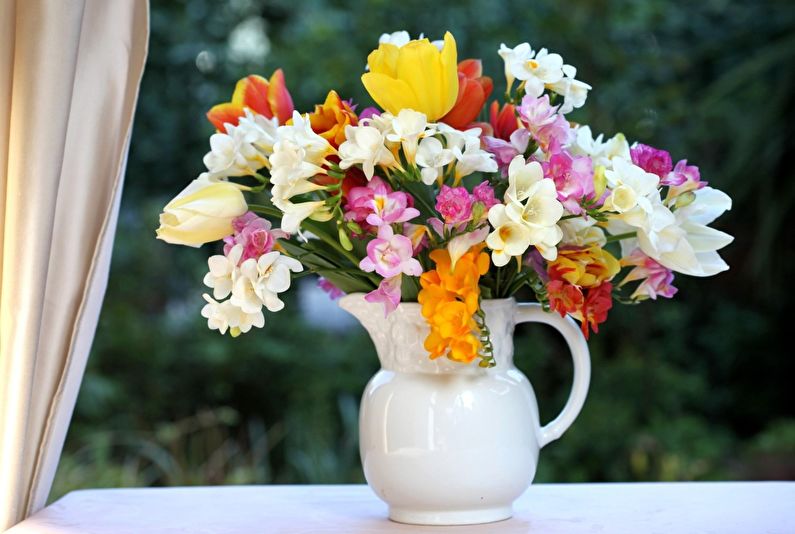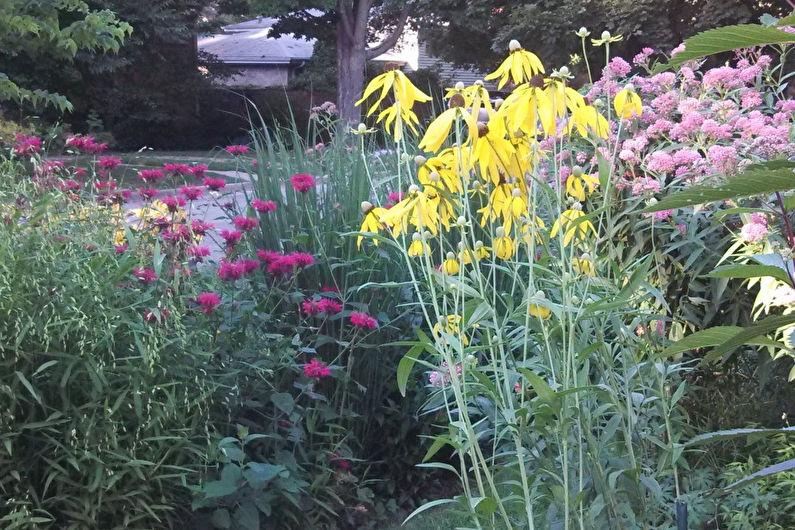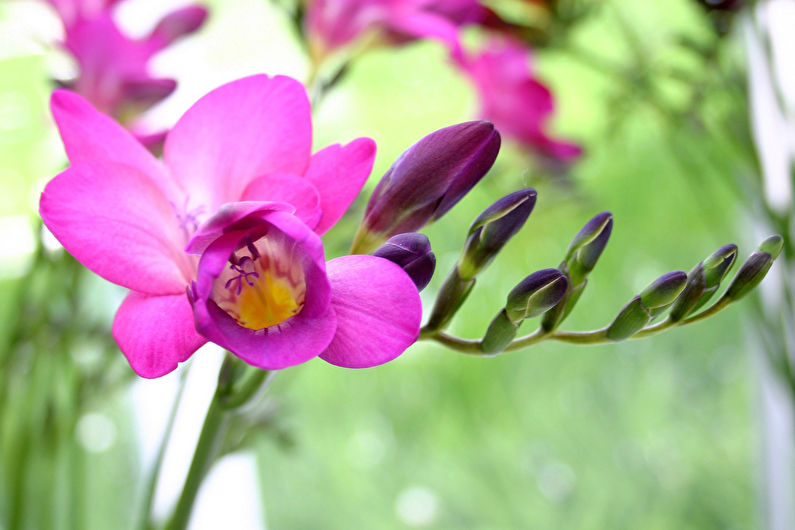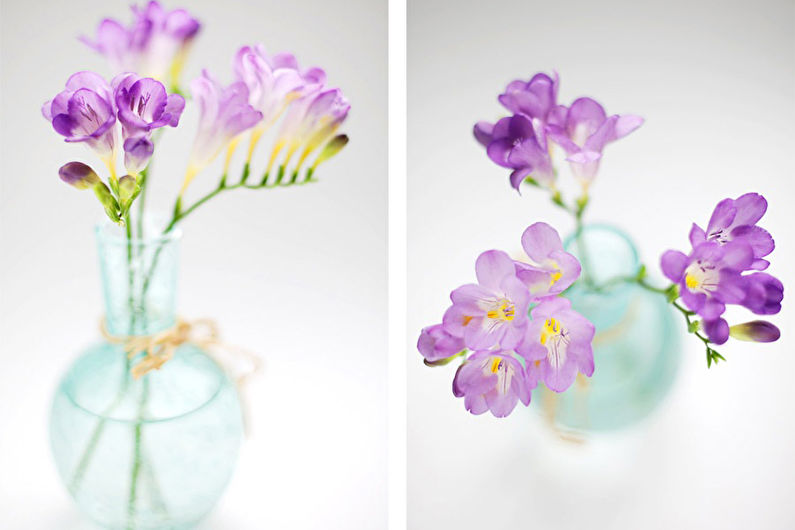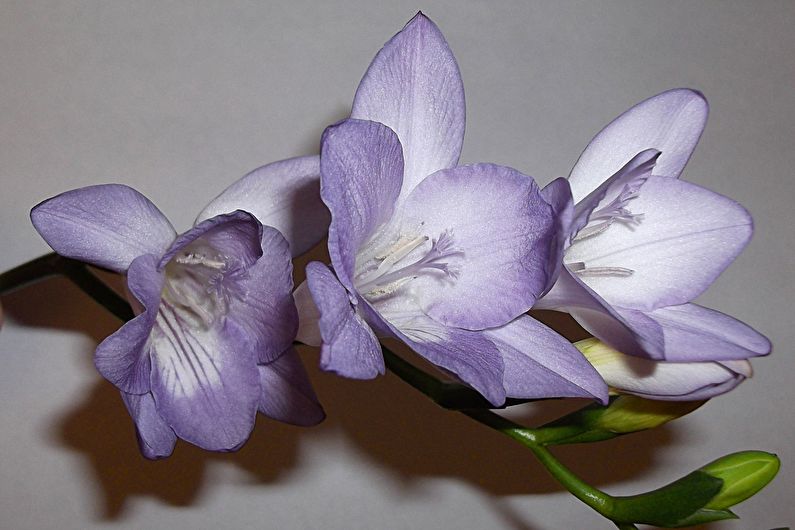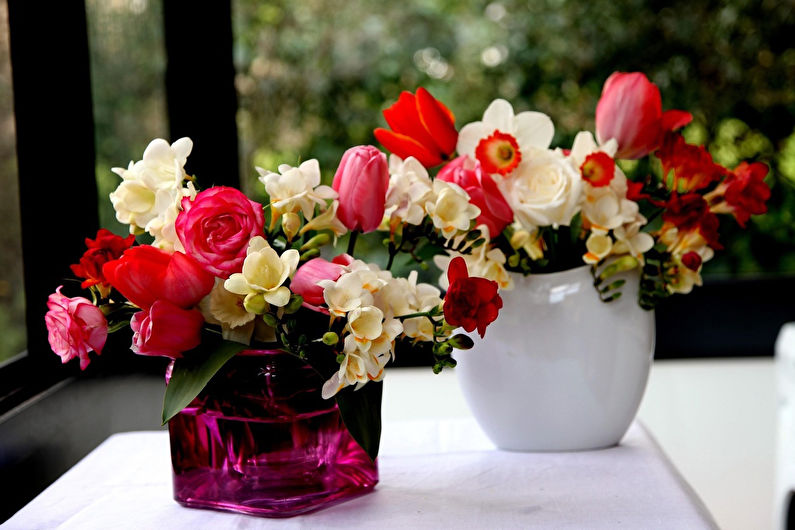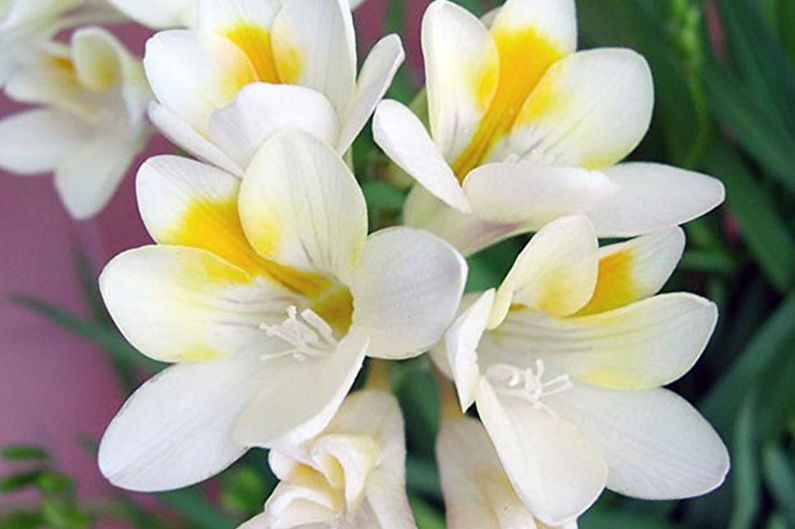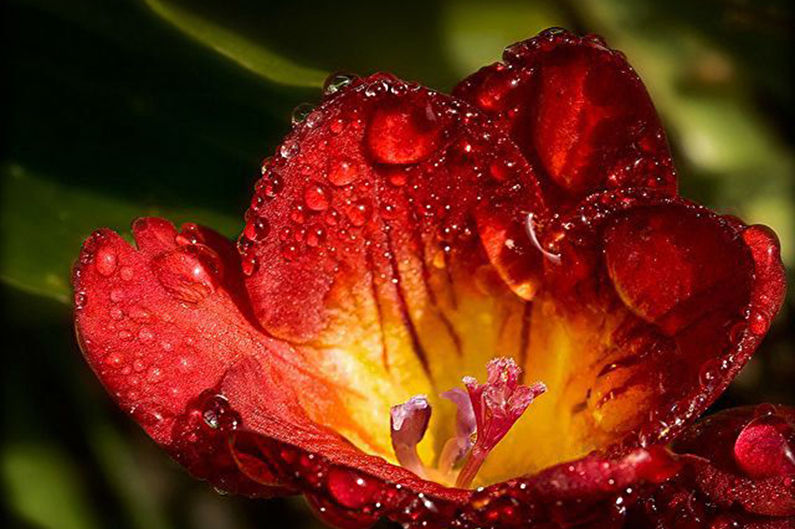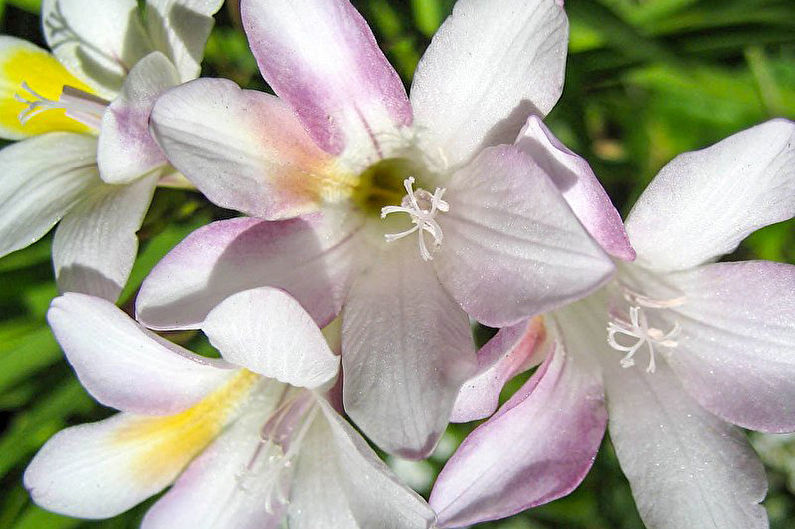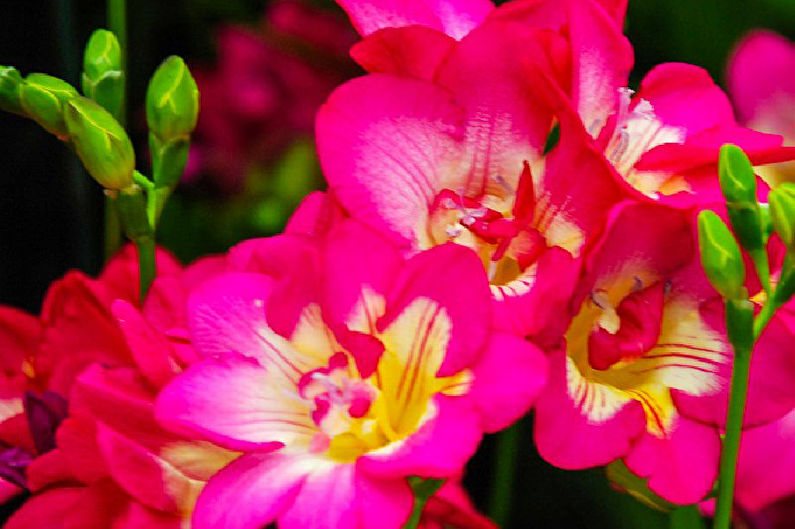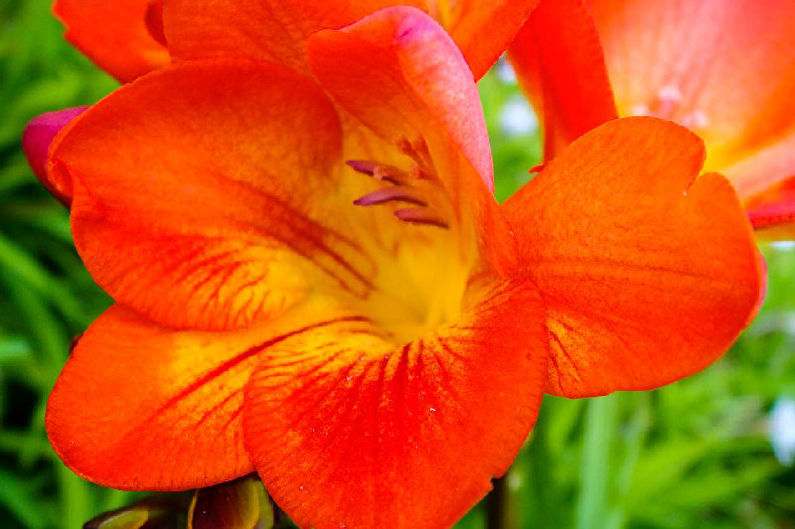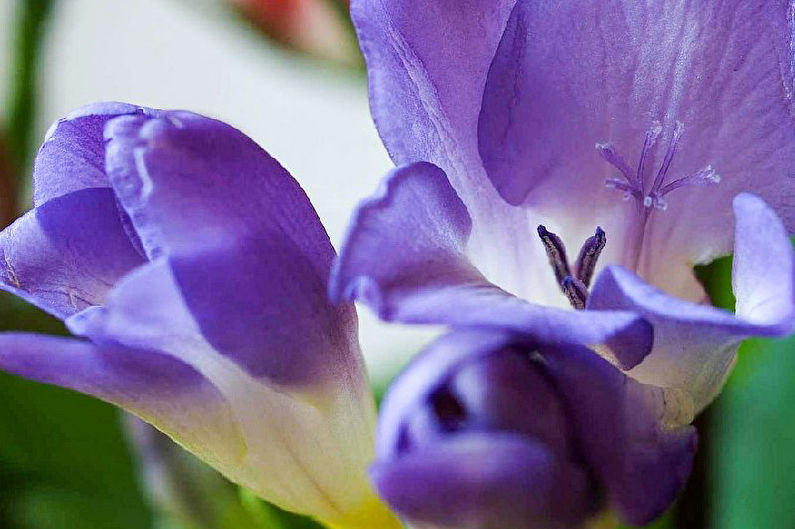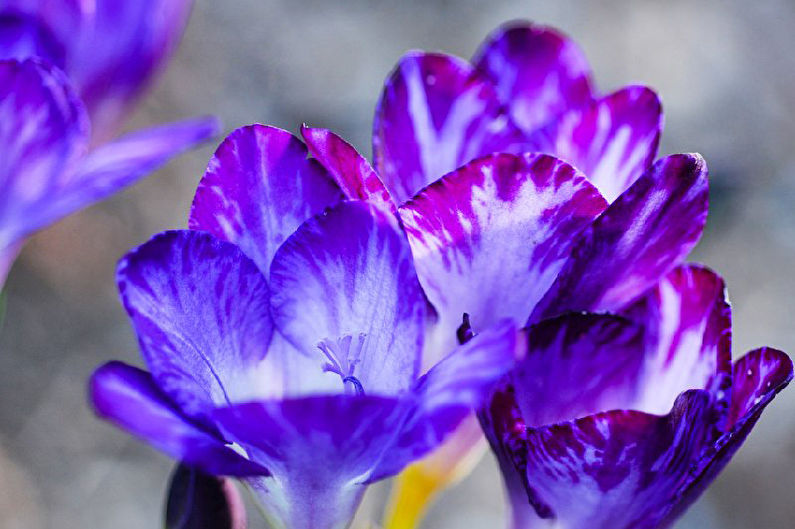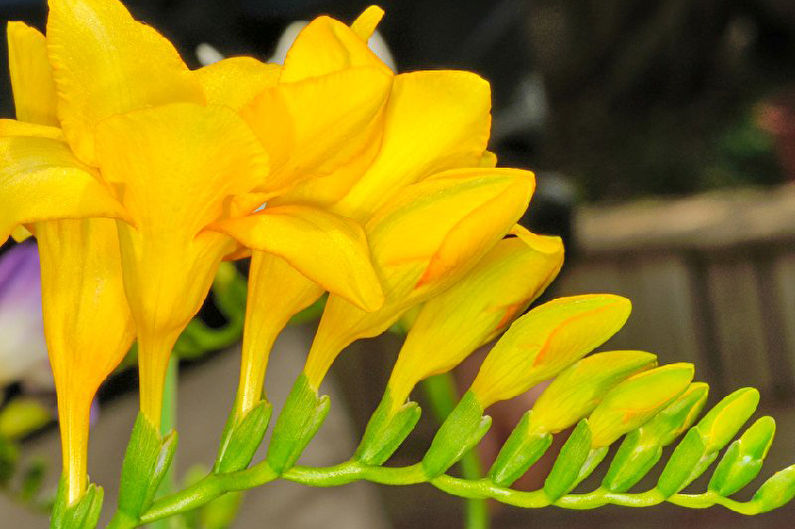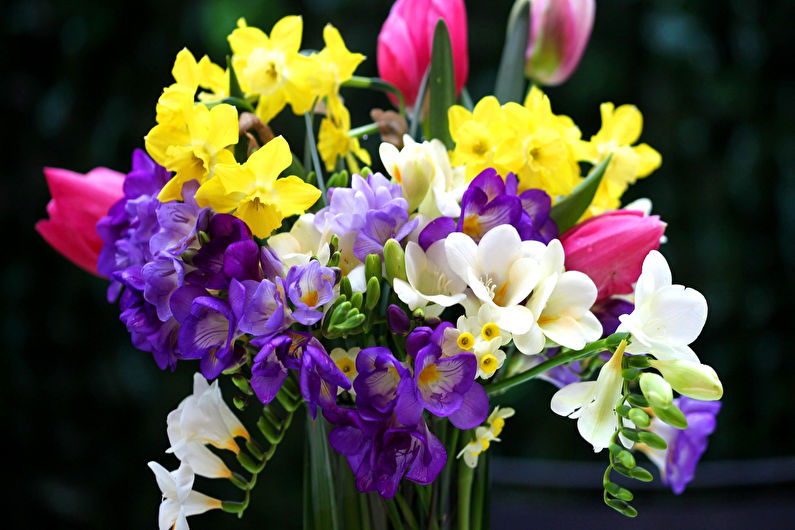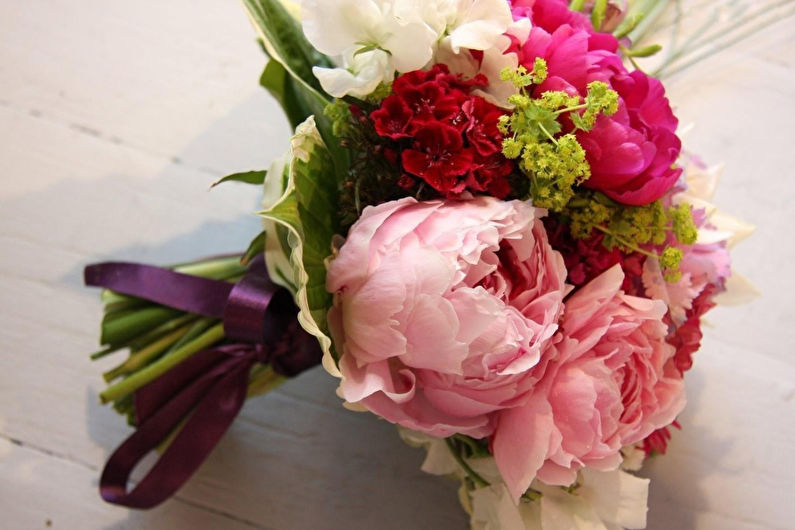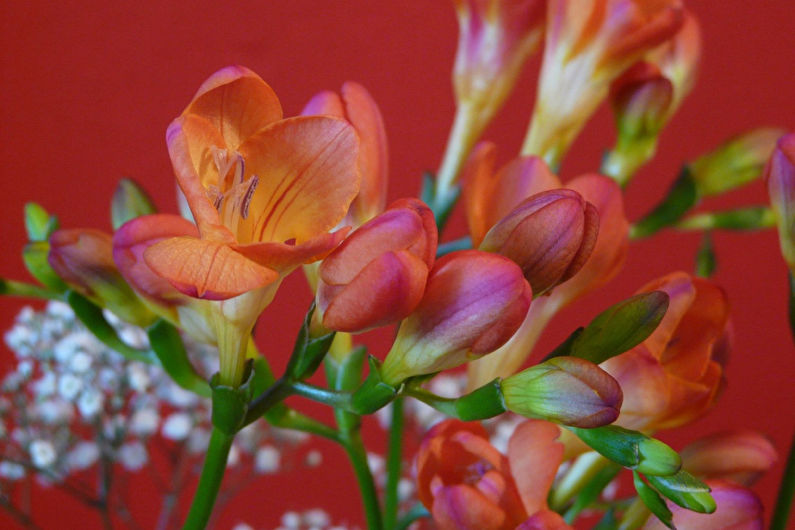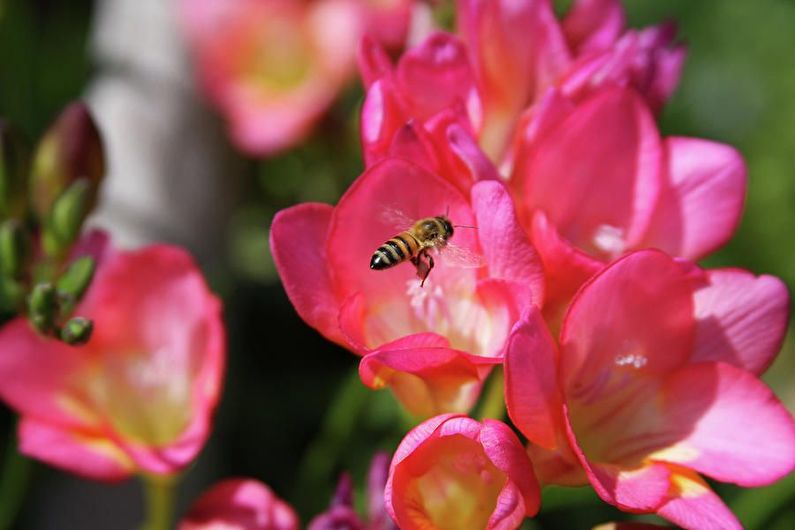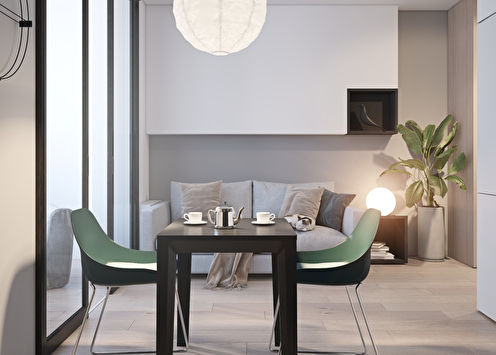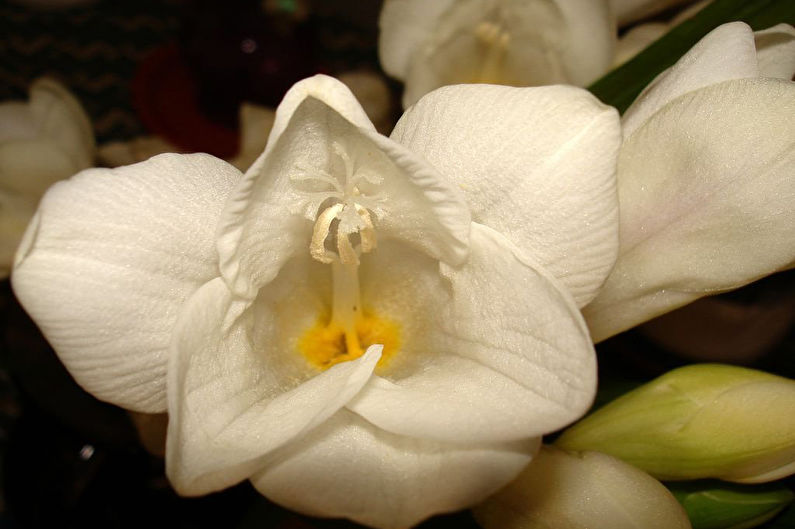
Freesia occupies a special place in the collection of bulbous plants. Thanks to the exquisite "porcelain" flowers, she not only decorates the flower beds, but is also often used to create bouquets, festive garlands, and buttonholes. The gentle bells of freesia exude a unique aroma in which fresh notes of the sea breeze, wood and citruses are easily felt. This is a truly aristocratic flower that fills the surrounding space with beauty and romance.
History of freesia
The geographic homeland of freesia is the Cape region of South Africa. During the colonization of this continent, European sailors brought the first bulbs to France and the UK, where an exotic plant fell in love with the royal court. An attractive appearance and a charming smell have contributed to the rapid spread of the flower throughout the world, but it still remains a symbol of high society.
Impressive with its rich colors and perfect shapes, freesia remains fresh for a very long time after being cut. A bouquet delivered to the water keeps its original appearance for up to 3 weeks. Perhaps that is why noble ladies considered freesia a flower of youth, using its petals for cosmetic procedures.
Initially, the cultivation of new varieties was done by gardeners of the French kings. Now their work is continued by breeders - professionals and amateurs who managed to create many interesting hybrids. In general, freesia can be easily distinguished from other corms by miniature (not more than 6 cm) fragrant flowers, collected in neat inflorescences, and thin narrow leaves up to 20 cm high. In this case, the length of the whole plant can vary from dwarf 20-centimeter varieties to meter varieties.
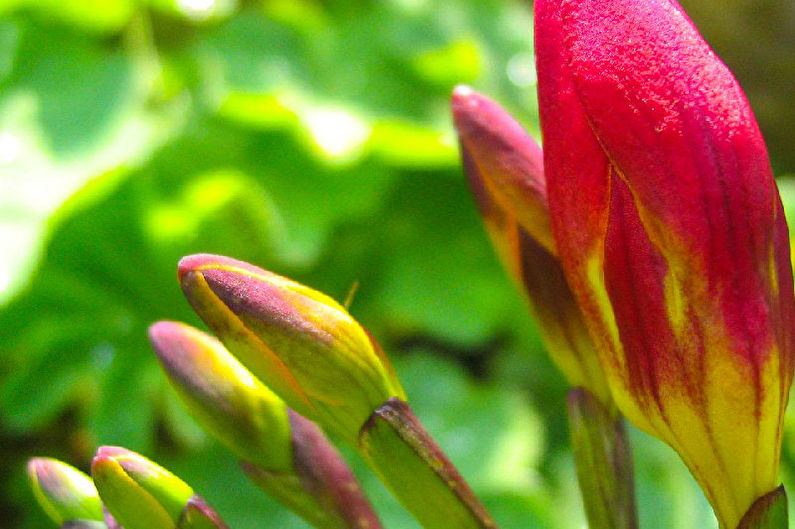
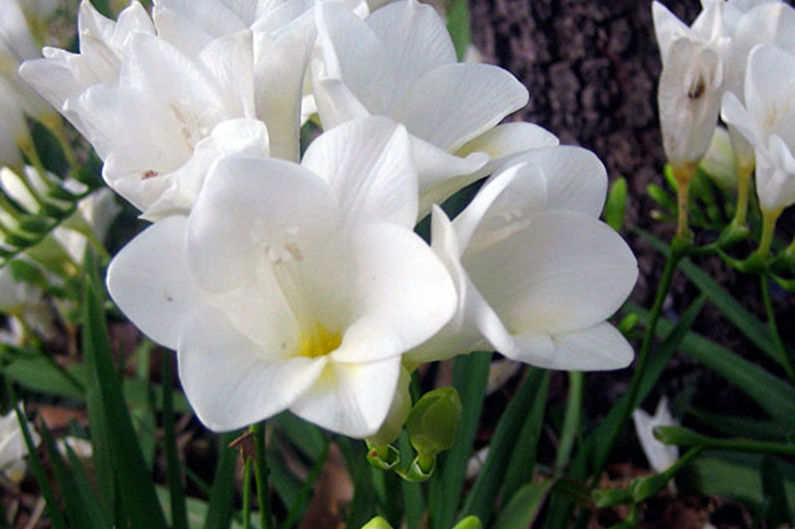
Planting and propagating freesia
Like other representatives of the Irisov botanical family, freesia is grown from tubers or seeds. The first method does not require special skills and in many ways resembles planting gladioli, lilies, hyacinths, tulips. Bulb planting in open ground is carried out in early spring, but if in a certain region March-April is frosty or snowy, it is better to grow them a little in containers filled with wet peat. To avoid diseases, the bulbs are soaked for 0.2 minutes in a solution of foundationazole 0.2%, and during planting, they are covered with a 5-centimeter layer of earth. With regular watering and access to sunlight, sprouts usually appear after 20 days.
If there are no ripe bulbs, seeds are used to propagate the selected variety. They must be fully ripe, collected no more than a year ago. The best time for sowing is early spring, then by the next year the flower has time to grow and bloom at home.
To begin with, the boxes are disinfected by standing for 15 minutes in a saturated solution of potassium permanganate, soaked for a day in warm water (+ 18C) and at the same temperature left in wet sand for two weeks. Hatching seeds are sown in containers with an interval of 5-7 cm, to a depth of 0.6 to 1 cm. For normal seedling development, heat should be provided from + 20-22C and air humidity at 65-75%. For this purpose, a mini-greenhouse is well suited, in which daily it is necessary to arrange sprinkling of the sprouts with warm water from the spray gun.
Emerging gatherings respond poorly to direct sunlight, so it is better to choose slightly shaded window sills on the east or west side. In the autumn period, plants should be exposed to 12 hours a day, but the temperature can be gradually reduced to 10C or lower. Short daylight hours and cool conditions (+ 5-6С) are useful for freesia during the shoot production period, and when flowering, it needs abundant watering and warmth in the region of + 15С.
Topping up seedlings is carried out in stages: the first seedlings are fertilized with ammonium nitrate in a proportion of 10 g per 5 l of water; then every 2-3 weeks, to improve growth, use a weak (1:20) solution of bird droppings with the addition of 10 g of potassium nitrate and 20 g of superphosphate per 5 liters of the mixture. When the seedlings reach 10 cm in height, they are tied to wooden sticks to avoid breaking thin stems.
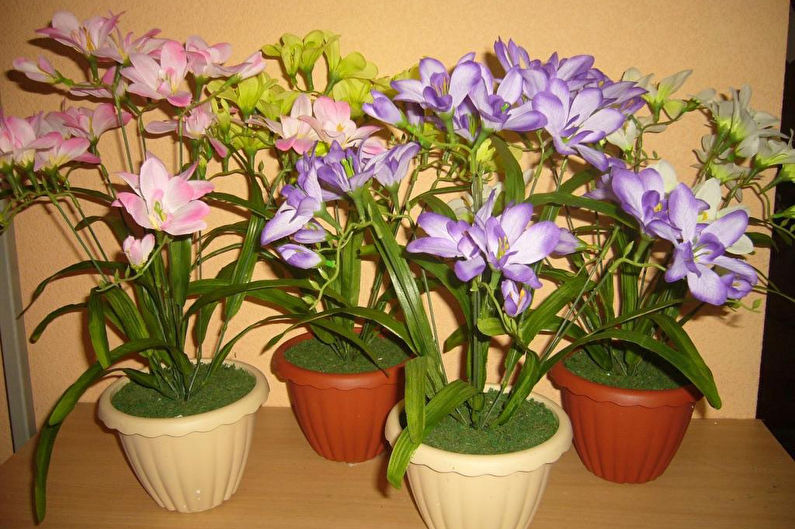
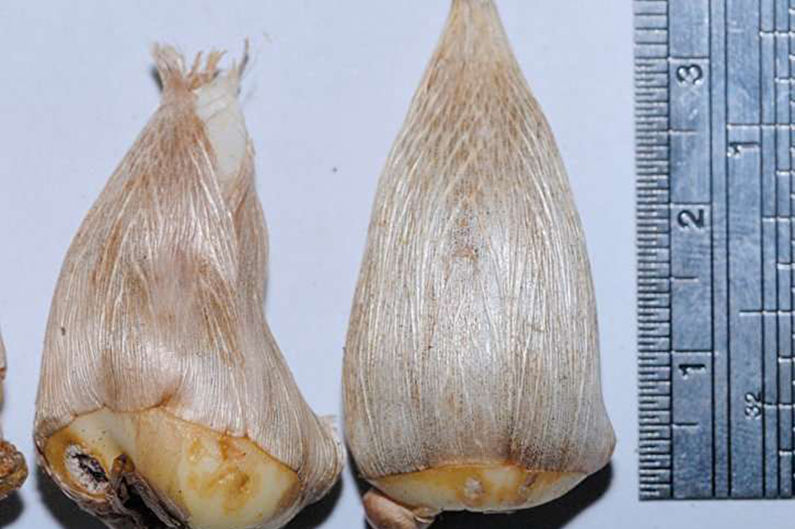
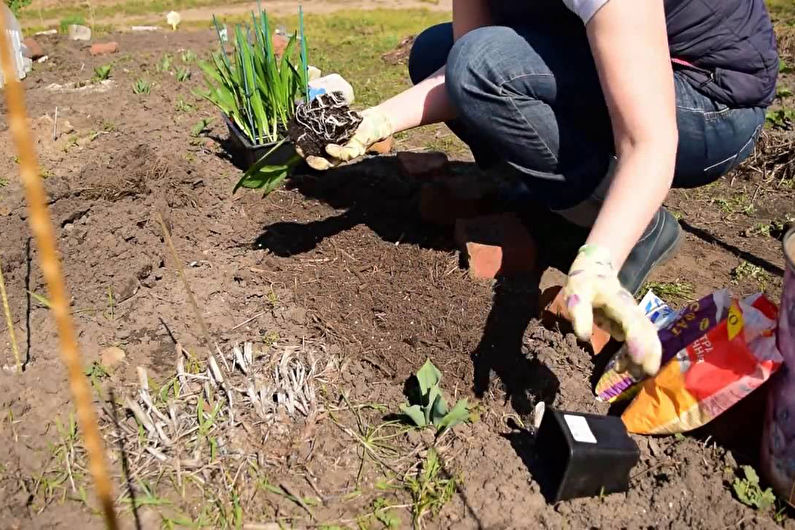
Freesia Care
The natural range of freesia - the Cape region - is located in the extreme southern point of Africa. The climate in this area resembles the Mediterranean, with a predominance of warm and humid air masses. The summer season in the area lasts from December to February, because freesia is also biologically “programmed” for flowering in February. Due to this feature, it is cultivated in greenhouses and greenhouses under a cut during the European winter, when most plants of the northern hemisphere are still at rest. At the same time, bulbs planted in open ground in May bloom very beautifully by October, giving the autumn garden even more charm.
Lighting. Under natural conditions, freesia grows on low subtropical slopes in the shade of shrubs. The same light shade and protection from the wind should be provided to the plant in the flowerbed. However, these should not be cold northern or too dark patches in the back of the garden - quiet eastern and western lawns are more suitable.

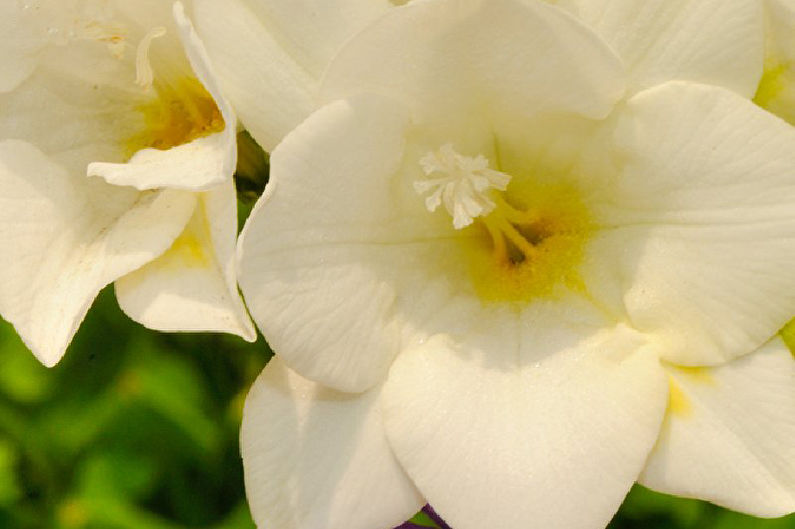
The soil. Satisfied in the wild with poor rocky soils, freesia will almost certainly take root where it was planted. But the more nutritious the composition of the soil, the more beautiful it will bloom, releasing more buds and forming elegant inflorescences. The ideal option is loose peaty-leafy land with the addition of humus and turf. From above it is useful to mulch it with needles, chopped straw, sawdust.

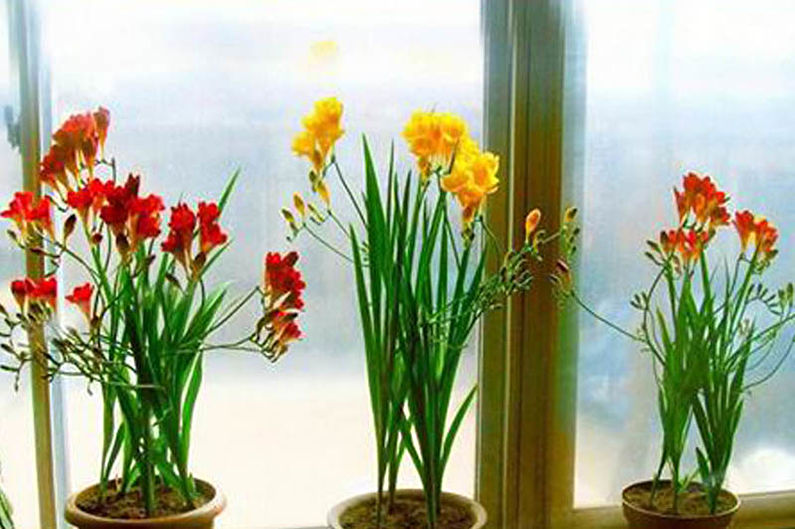
Watering freesia should be moderate, while it is better to leave the earth a little drier than waterlogging it, especially if the soil is not loose enough. Twice a month, the plant is watered with potassium salt (15-20 g per 10 l of water) and a solution of superphosphate (30 g per 10 l of water).
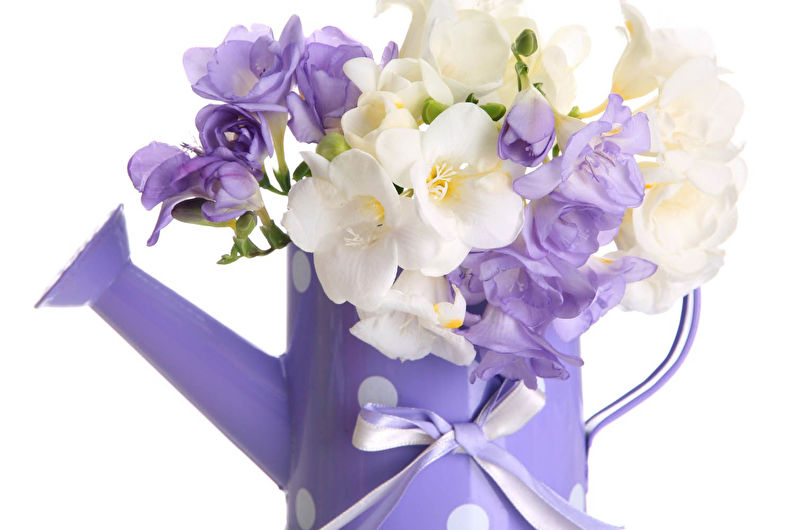
Pest and Disease Prevention consists in spraying freesia with a soap solution, which helps to avoid spider mites and aphids. If, due to adverse conditions, rotten areas form, they are removed, the rest is treated with potassium permanganate or foundationazole.
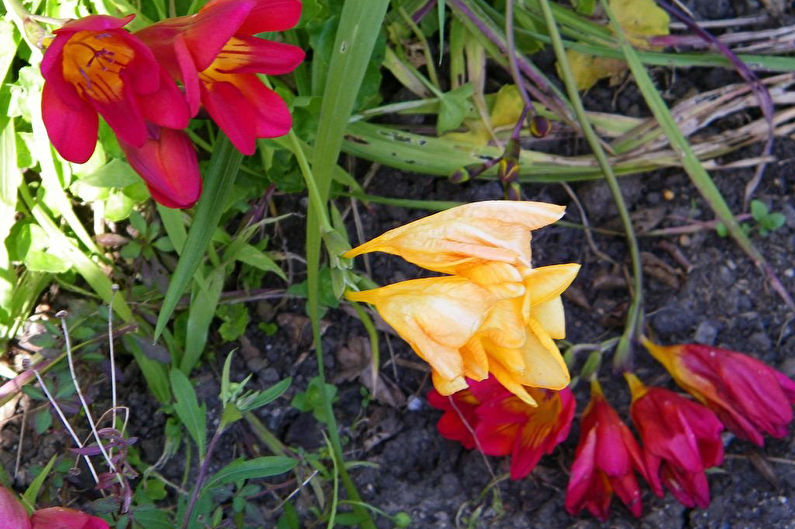

Freesia garter to wooden supports - a necessary process, given the fragility of the stems. This is especially true for high varieties, as well as with increased flowering of branches.
For the winter, the tubers of the southern beauty are dug up, slightly cleaned of dirt and left for storage in a cool dark place, wrapped with paper or a cotton cloth. You can also transplant them into pots and admire the repeated flowering on the windowsill or loggia in spring.
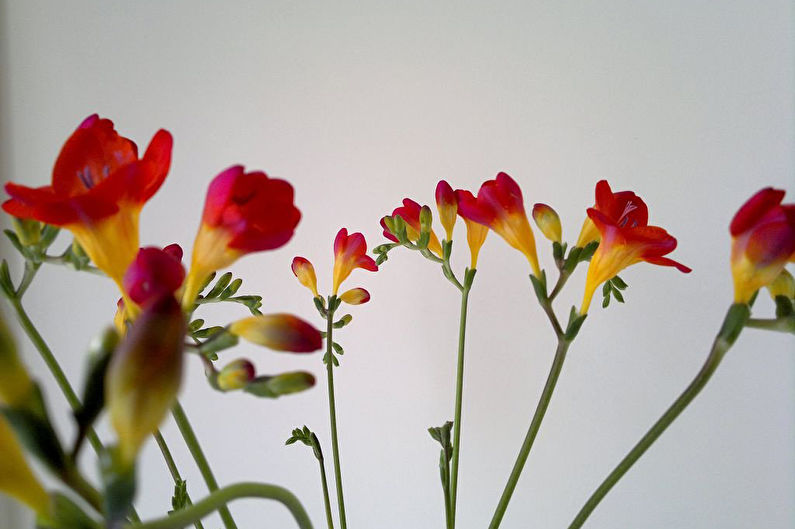
Freesia in landscape design and floristry
A large palette of bright, clear colors makes freesia one of the most attractive flowers for professional florists. Snow-white and cream varieties, in particular terry, look perfect in wedding bouquets. They are often combined with delicate roses and tulips in pastel shades, white lilies, green chrysanthemums.
Glowing yellow, raspberry, purple, scarlet, orange, purple freesia look incredibly elegant surrounded by garden greenery and amid well-groomed lawns. Rich and contrasting tones allow you to create cheerful compositions for decoration. Cut or grown in pots freesia flowers, you can very nicely decorate the interior, picking up the most harmonious combinations of shades.
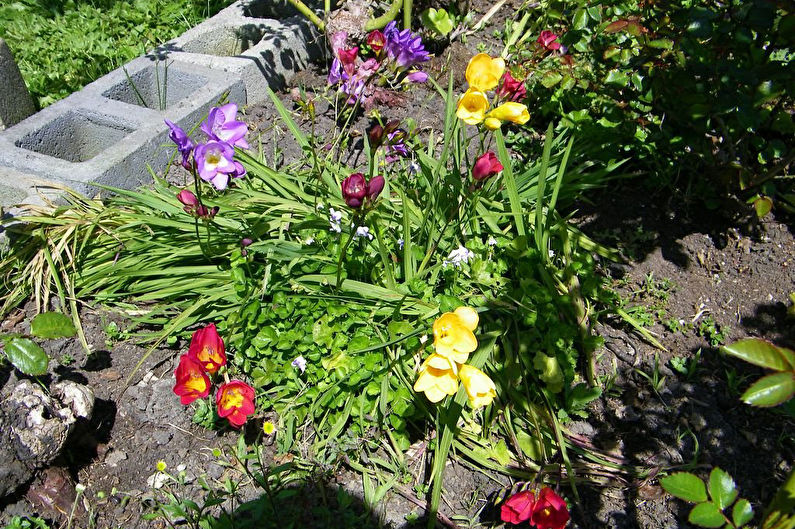

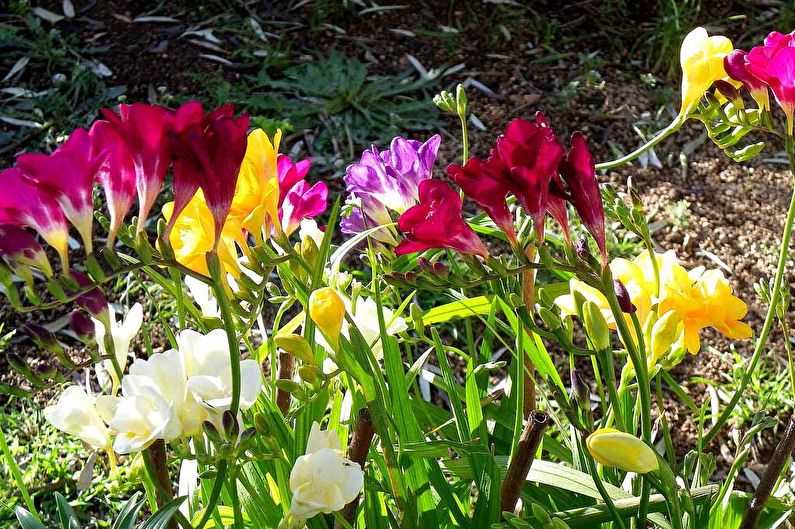
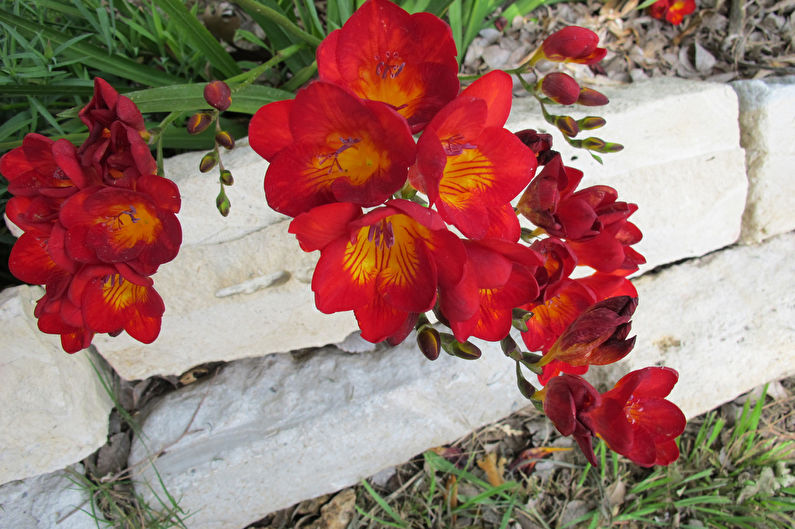

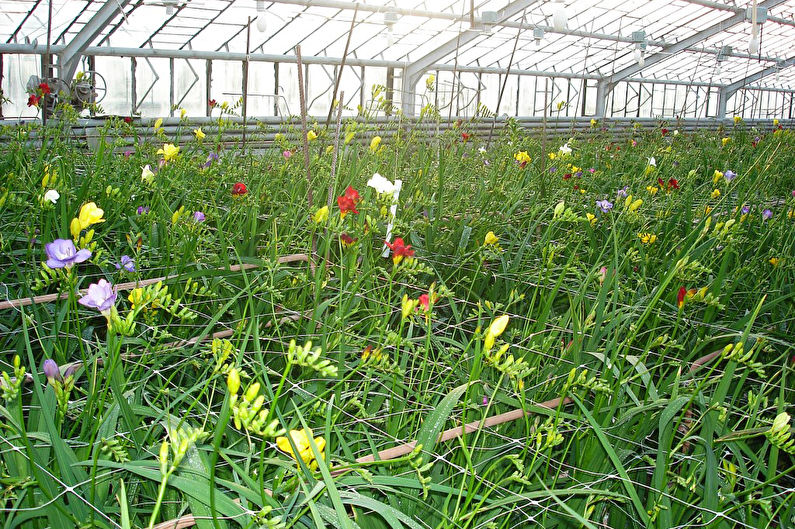
Freesia - photo
Freesia requires care and regularly maintained stable conditions in which the plant will become a real decoration of any garden. In our gallery we have collected photographs of various varieties of freesia, demonstrating their colorful appearance.
